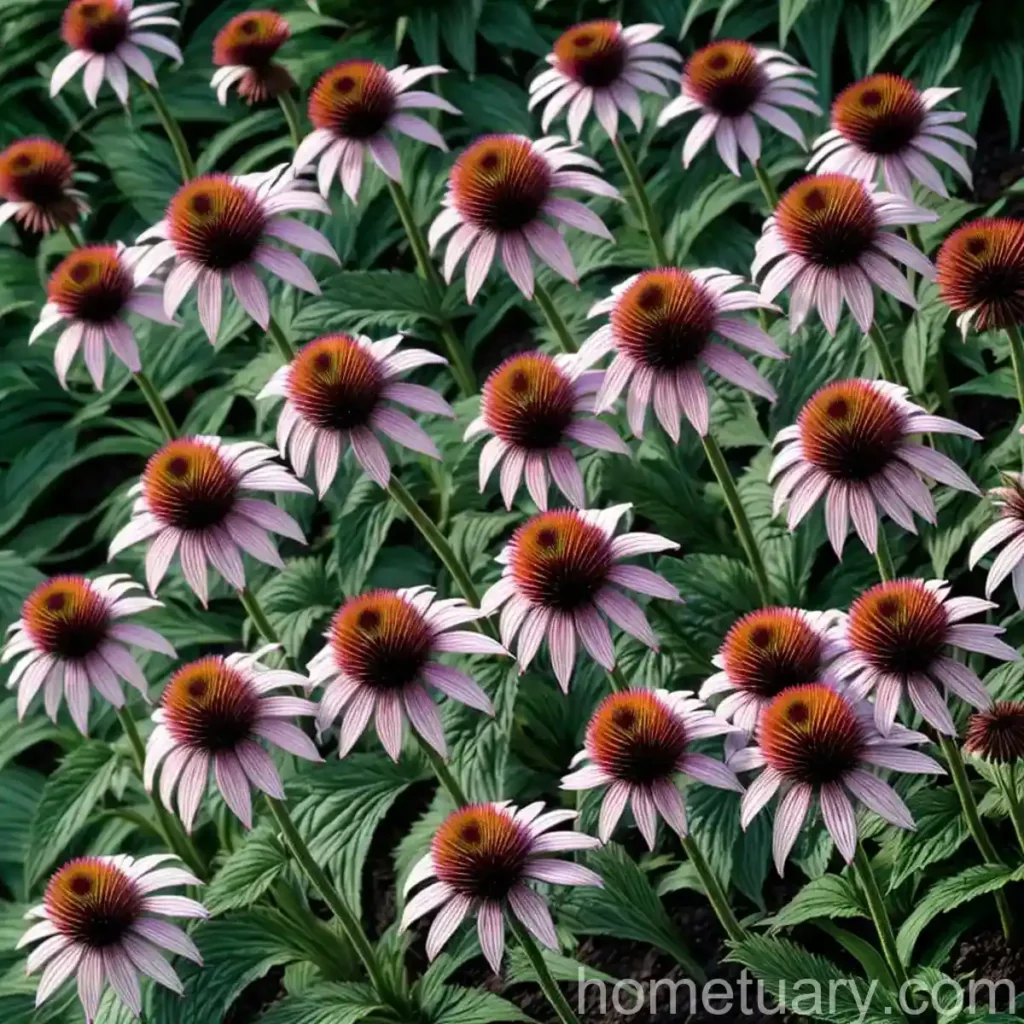Purple Coneflower (Echinacea purpurea ‘Avalanche’): A Plant Scientist’s Guide
Introduction
As a plant scientist, I am excited to journey alongside you to explore the captivating world of Echinacea purpurea ‘Avalanche.’ This stunning plant, commonly known as the Purple Coneflower, encompasses a rich array of attributes that make it not only an exquisite addition to gardens but also a significant herbal remedy. Through this comprehensive guide, we will delve into its culture, uses, landscape appeal, medicinal properties, and so much more. Let’s embark on this enthralling botanical voyage.
yaml
Plant Name: Purple Coneflower (Echinacea purpurea 'Avalanche')
What is Purple Coneflower?
Echinacea purpurea ‘Avalanche,’ also known as the Purple Coneflower, is a captivating perennial plant that boasts exquisite white blossoms. It is a cultivar of the Echinacea purpurea species, and its visual allure is enhanced by the prominent conical shape of its flower heads, which provide a delightful contrast to the garden landscape.
Key Takeaways
Before delving deeper into the specifics of cultivating and caring for the Purple Coneflower, let’s understand some of its key attributes.
Key Attributes
- Scientific Name: Echinacea purpurea ‘Avalanche’
- Common Name: Purple Coneflower
- Variety: Cultivar of Echinacea purpurea
- Flower Color: White
- Plant Type: Perennial
- USDA Hardiness Zones: 3-8
Now that we have an overview of the Purple Coneflower, let’s delve into its cultivation, characteristics, and the many benefits it offers.
Culture
To ensure the thriving growth of Purple Coneflower, it is crucial to understand its cultural requirements. From water and sunlight needs to soil preferences and overall maintenance, cultivating this plant entails a nuanced approach. Let’s explore the various cultural aspects associated with Echinacea purpurea ‘Avalanche.’
Uses
Garden Ornament:
The Purple Coneflower, with its enchanting white blooms and distinctive cone-shaped centers, serves as a captivating ornament in gardens and landscapes. Its attractive appearance and hardy nature make it an excellent choice for adding visual interest and charm to outdoor spaces.
Medicinal Properties:
Apart from its decorative appeal, Echinacea purpurea ‘Avalanche’ holds significant medicinal value. The plant’s roots and aerial parts are renowned for their immune-boosting properties, making it a popular ingredient in herbal remedies and natural health supplements.
Water
Watering Needs
- Established Plants: Once established, Purple Coneflower displays commendable drought tolerance and needs minimal supplemental watering. It is adapted to survive periods of moderate drought, making it an excellent choice for water-wise gardening.
- Watering Frequency: During the initial establishment phase, provide regular watering to aid root development. Once the plant is well-rooted, it can thrive with minimal watering, relying on natural rainfall in most cases.
Sunlight
Sun Requirements
- Full Sun: Echinacea purpurea ‘Avalanche’ thrives in full sun conditions. Ensure that the planting site receives at least 6-8 hours of direct sunlight daily for optimal growth and profuse blooming.
Fertilizer
Nutrient Needs
- Moderate Fertility: Purple Coneflower exhibits good adaptability to various soil types and fertility levels. While it can thrive in moderately fertile soils, excessive fertilization may lead to lush foliage at the expense of prolific flowering.
- Organic Amendments: Prioritize organic soil amendments such as well-rotted compost or aged manure when improving soil fertility. These amendments contribute to long-term soil health and promote balanced growth.
Soil
Soil Preferences
- Well-Drained Soil: Purple Coneflower thrives in well-drained soils and can withstand brief periods of dryness once established. Avoid waterlogged or compacted soils, as they can lead to root rot and other moisture-related issues.
- Neutral to Alkaline Soil: Echinacea purpurea ‘Avalanche’ exhibits excellent adaptability to neutral to slightly alkaline soil pH levels. Conduct a soil test to assess the pH and make necessary adjustments for optimal growth.
Pruning
Maintenance Practices
- Deadheading: Regular deadheading of spent blooms promotes prolonged flowering and prevents self-seeding, effectively managing the plant’s spread.
- Cutting Back: In late fall or early spring, cut back the spent stems to ground level to facilitate fresh growth and maintain a tidy appearance.
Propagation
Propagation Methods
- Division: Propagate Purple Coneflower through division, particularly in early spring or late fall. Dividing mature clumps not only rejuvenates the plant but also yields new specimens for expansion or sharing with fellow gardening enthusiasts.
Container Popularity
Container Gardening
- Container Size: When cultivating Purple Coneflower in containers, ensure the pots or planters provide ample space for root development. Opt for large containers with adequate drainage holes to promote healthy growth.
- Soil Considerations: Utilize well-draining potting mix to prevent waterlogging and maintain suitable soil moisture levels in the container environment.
Botanist’s Tips
Expert Recommendations
- Pollinator Attraction: Purple Coneflower’s nectar-rich blooms attract an array of pollinators, including butterflies, bees, and hummingbirds, making it a valuable addition to pollinator-friendly gardens.
- Companion Planting: Pair Echinacea purpurea ‘Avalanche’ with complementary plants such as Rudbeckia, Salvia, and Echinops to create visually dynamic and ecologically beneficial garden schemes.
Fun Facts
Now that we have explored the cultural aspects of Purple Coneflower, let’s uncover some delightful fun facts about this charming plant.
Interesting Tidbits
- Native Heritage: Echinacea purpurea, the parent species of ‘Avalanche,’ holds cultural significance among Native American tribes, who traditionally used it for various medicinal purposes.
- Historical Remedies: The medicinal properties of Echinacea have been recognized for centuries, with its usage extending from traditional healing practices to modern herbal medicine applications.
- Botanical Diversity: Apart from ‘Avalanche,’ the Echinacea purpurea species encompasses a diverse range of cultivars, each presenting unique flower colors and growth habits.
Links to External Resources
As we delve deeper into our exploration of Echinacea purpurea ‘Avalanche,’ I highly recommend exploring the following external resources for additional insights and practical guidance:
In the subsequent sections, we will unravel the horticultural significance, common diseases, pest management, and much more associated with Echinacea purpurea ‘Avalanche.’ This journey promises to unveil an array of insights, transforming our understanding of this remarkable plant.















